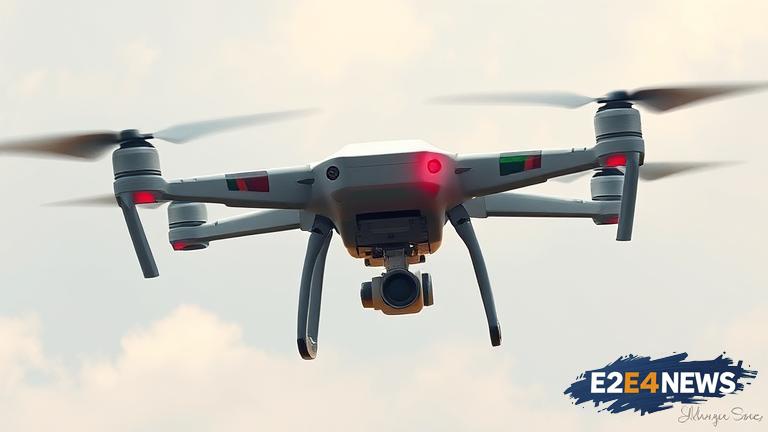The use of drones in warfare is becoming increasingly prevalent, with many countries investing heavily in the development and deployment of these unmanned aerial vehicles. The potential benefits of drones are numerous, including increased precision, reduced risk to human life, and enhanced surveillance capabilities. However, the growing use of drones also poses significant risks, including the potential for unmanned aircraft to be used in terrorist attacks or other malicious activities. The recent use of drones in conflicts such as Ukraine and Yemen has highlighted the need for effective countermeasures to be developed. The United States, China, and other major military powers are all investing heavily in drone technology, with the global drone market expected to reach $43 billion by 2024. Despite the many benefits of drones, there are also concerns about the potential for these vehicles to be used in ways that violate international humanitarian law. The use of drones to carry out targeted killings, for example, has raised questions about the legality and morality of such actions. Furthermore, the increasing use of drones is also raising concerns about the potential for these vehicles to be used in cyber attacks, with the possibility of drones being hacked and used to carry out malicious activities. The development of effective countermeasures to the drone threat is a complex and challenging task, requiring the coordination of multiple stakeholders and the development of new technologies and strategies. The international community must work together to develop effective regulations and standards for the use of drones, in order to prevent the misuse of these vehicles and to ensure that they are used in ways that are consistent with international law. The use of drones is also raising important questions about the future of warfare, with the potential for these vehicles to revolutionize the nature of combat and to pose significant challenges to traditional military strategies. The development of autonomous drones, for example, raises important questions about the potential for these vehicles to be used in ways that are beyond human control. The use of drones is also highlighting the need for new forms of international cooperation and diplomacy, in order to address the many challenges and risks associated with these vehicles. In conclusion, the increasing use of drones in warfare is a growing concern, with the potential to pose significant threats to global security and to revolutionize the nature of combat. The international community must work together to develop effective regulations and standards for the use of drones, and to address the many challenges and risks associated with these vehicles.
